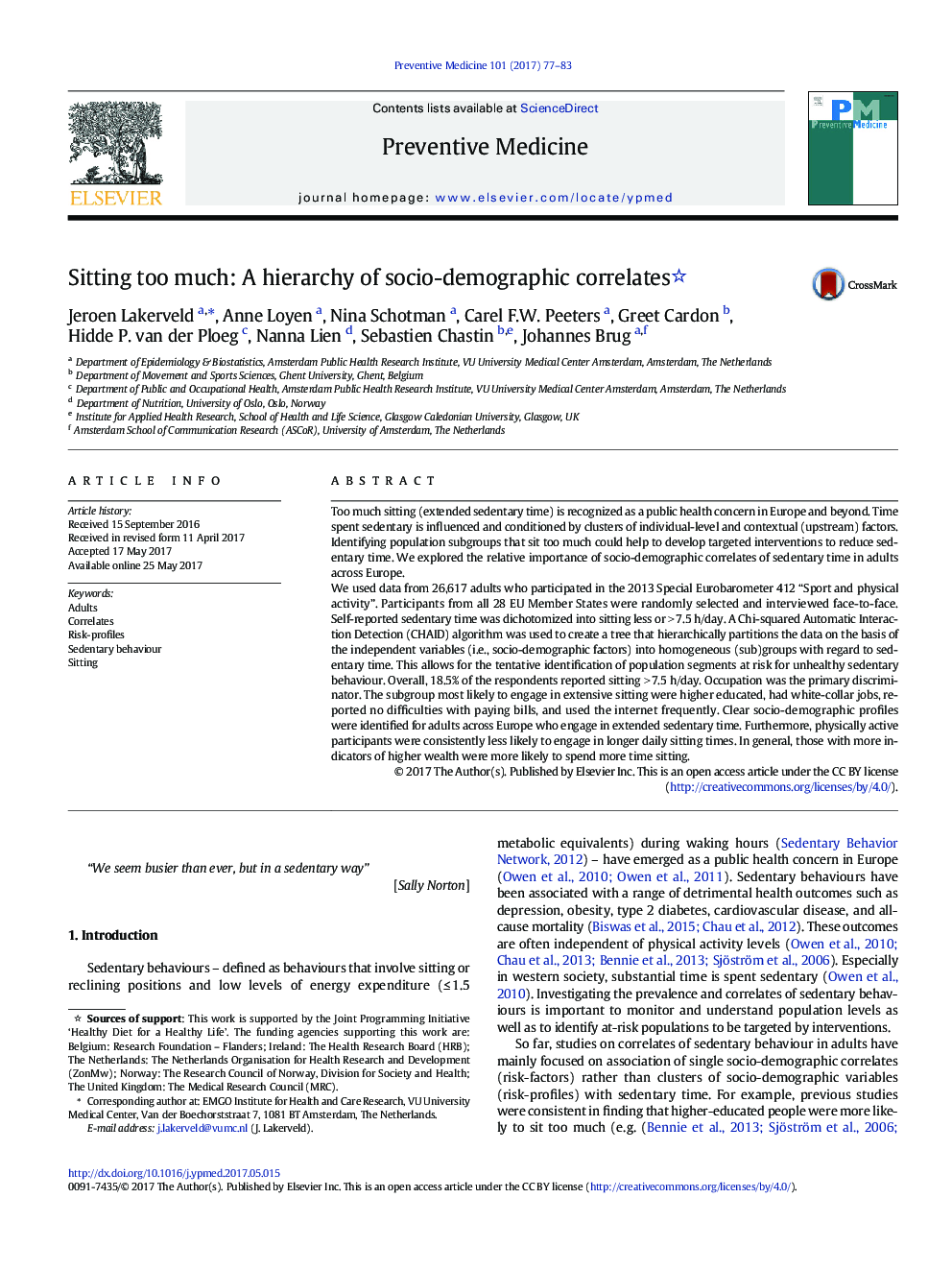| کد مقاله | کد نشریه | سال انتشار | مقاله انگلیسی | نسخه تمام متن |
|---|---|---|---|---|
| 5635521 | 1581613 | 2017 | 7 صفحه PDF | دانلود رایگان |
- In 26,617 European adults we identified risk profiles for those who sit too much.
- Type of occupation was the primary discriminator to identify people at risk.
- Higher socio-economic status subgroups were more likely to sit for extended time.
- Gender, level of urbanisation and internet use were also important predictors.
Too much sitting (extended sedentary time) is recognized as a public health concern in Europe and beyond. Time spent sedentary is influenced and conditioned by clusters of individual-level and contextual (upstream) factors. Identifying population subgroups that sit too much could help to develop targeted interventions to reduce sedentary time. We explored the relative importance of socio-demographic correlates of sedentary time in adults across Europe.We used data from 26,617 adults who participated in the 2013 Special Eurobarometer 412 “Sport and physical activity”. Participants from all 28 EU Member States were randomly selected and interviewed face-to-face. Self-reported sedentary time was dichotomized into sitting less or >Â 7.5Â h/day. A Chi-squared Automatic Interaction Detection (CHAID) algorithm was used to create a tree that hierarchically partitions the data on the basis of the independent variables (i.e., socio-demographic factors) into homogeneous (sub)groups with regard to sedentary time. This allows for the tentative identification of population segments at risk for unhealthy sedentary behaviour. Overall, 18.5% of the respondents reported sitting >Â 7.5Â h/day. Occupation was the primary discriminator. The subgroup most likely to engage in extensive sitting were higher educated, had white-collar jobs, reported no difficulties with paying bills, and used the internet frequently. Clear socio-demographic profiles were identified for adults across Europe who engage in extended sedentary time. Furthermore, physically active participants were consistently less likely to engage in longer daily sitting times. In general, those with more indicators of higher wealth were more likely to spend more time sitting.
Journal: Preventive Medicine - Volume 101, August 2017, Pages 77-83
